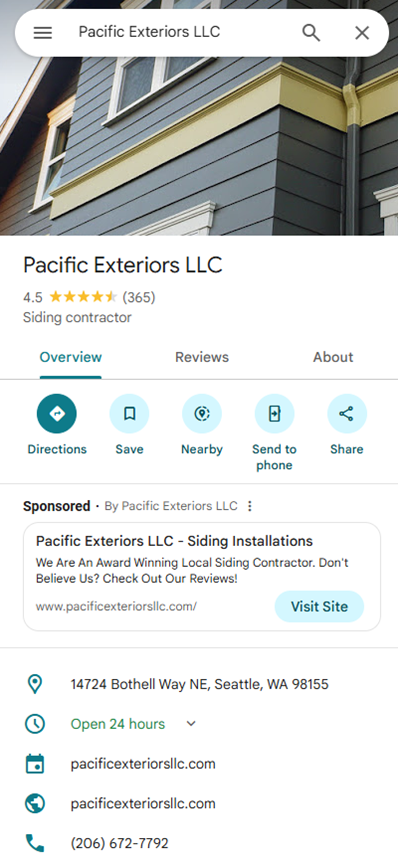Subcontractors have sometimes earned a bad reputation due to issues that have caused them to be unreliable, provide poor workmanship, and/or lack accountability.
Without proper vetting, a range of concerns can arise; subcontractors may produce low quality work, prioritize other projects over yours, or operate with little connection to a company’s core values and commitment to excellence. This can lead to reduced accountability, tarnished reputations, and inefficiencies due to indirect communication.
Additionally, there's a risk of paying a premium price but receiving subpar labor, raising questions about trustworthiness and whether the project will be completed on time and within budget.
But let’s be honest, subcontractors are on every job site and involved in every project – the key is choosing the right ones. By carefully selecting and pre-qualifying subcontractors, companies can safeguard the integrity of their work and provide their clients with the exceptional service they deserve.
When you choose the right subcontractors to supplement your team AND communicate this to your customers, you can get ahead of concerns – while delivering your work on time and on budget.
Choosing the right team for your job
Before getting started with your project, make sure you have the right team in place. Hiring the right crew is crucial to the success of any construction project, so make sure you have the right team in place. Skilled and reliable professionals ensure the work is done safely, on time, and to the highest standards, saving you from costly mistakes and delays. By thoroughly vetting your crew, you can set your project up for success from the very start.
Being in business for almost 20 years, we've refined our vetting process to ensure we work only with skilled and reliable subcontractors who deliver exceptional results using this checklist:
Pre-Hire Vetting
A thorough pre-hire vetting process ensures you hire skilled subcontractors who align with your needs. From structured phone and in-person interviews to compliance checks and skill assessments, these steps help identify qualified candidates.
- Phone Interview: Begin with a detailed phone interview to assess the subcontractors’ experience, availability and overall alignment with your needs. Ask each subcontractor a series of questions to ensure they have standard knowledge to move forward to the next step. This is also a great opportunity to gauge their communication skills and professionalism.
- In-Person Interview: Follow up with an in-person interview to dive deeper into their expertise. This is your opportunity to qualify the candidate and perform an assessment of required skills. Pacific Exteriors LLC provides an Install Quiz to ensure they know how a job should be completed.
- Department of Revenue (DOR) and Labor & Industries (L&I) Check: Verify the contractor’s compliance with local regulations by performing a DOR and L&I check. This is to make sure they have the necessary licenses with no outstanding violations.
Once these steps are complete and the candidate has qualified, this doesn’t mean they’re done being evaluated – they should remain under the post-hire vetting process. This next stage includes consistent coaching, feedback and support to keep them aligned with your company and project needs.
Post-Hire Vetting Process:
Hiring the right subcontractors is only the first step – maintaining high standards requires ongoing evaluation and support. A structured post-hire vetting process ensures your team remains aligned with company goals while continuously improving their performance. Ongoing evaluation and feedback ensure long-term success and alignment with your company’s goals.
- Monthly DOR & L&I Checks: Check in with the Department of Revenue and Labor & Industries monthly to be sure their licenses stay up to date and without violations.
- Weekly Site Visits and Coaching: Project Managers should conduct weekly site visits to monitor the progress of a project and provide feedback and coaching when needed.
- Crew Performance Grading: Grade each crew after every project on quality, cleanliness, reliability, safety and punchlists (leftover completion of project details).
- Quarterly Performance Reviews: Hold a quarterly meeting with upper production staff to review their scores and discuss strengths, identify areas for improvement, and to set goals for the coming quarter.
A strong post-hire vetting process is key to maintaining high standards and ensuring long-term success. Regular checks, ongoing coaching, and structured performance reviews help keep your team aligned with company goals and continuously improving. By implementing these practices, you create a culture of accountability and excellence that drives consistent results on every project.
Don’t be afraid to hire subcontractors – just do it right.
In short, working with unvetted subcontractors can create challenges that might throw a project off track. Pre-hire vetting and continuous monitoring will allow you to hire subcontractors who meet your standards and create a system for accountability.
Take the time to pre-vet candidates thoroughly, checking references, certifications, and past work experience. Verify that they’re licensed and insured, and ensure they align with your project needs and expectations. A little extra effort in the beginning can save you significant stress down the line, guaranteeing the work is done correctly and to the highest standards.
By approaching the process methodically and prioritizing qualified professionals, you can turn your vision for your home into reality with confidence and peace of mind. Don’t be afraid to hire subcontractors, just make sure you’re hiring the right ones.
Subscribe to Pacific Exteriors LLC's Blog








Comments